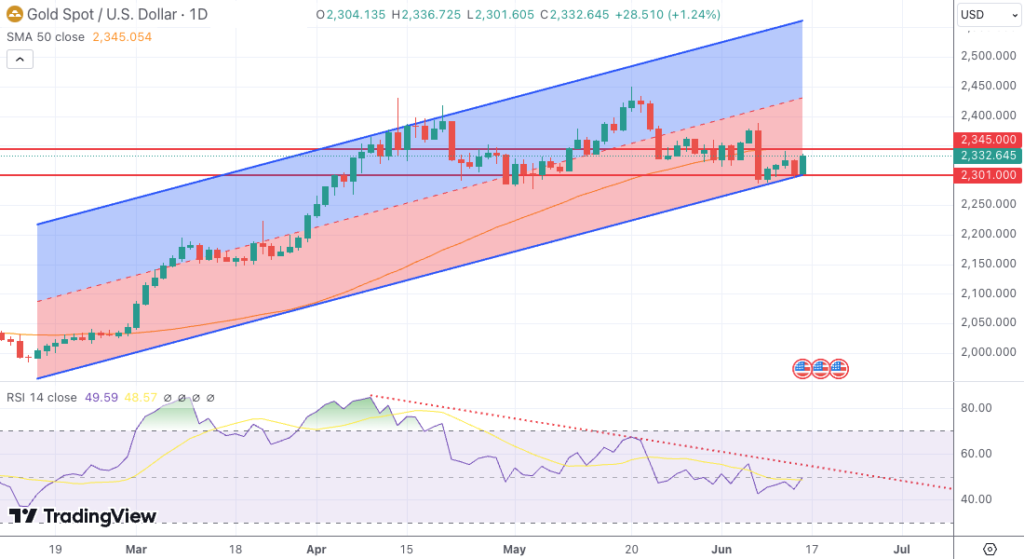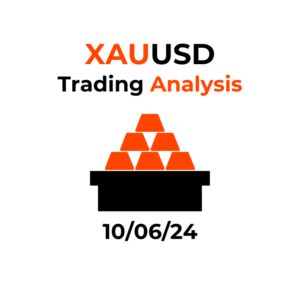Key Takeaways
- Gold prices found support near $2,300, snapping a three-week losing streak.
- U.S. inflation data showed consumer prices unchanged in May, leading to adjusted expectations for interest rate cuts by year-end.
- Gold faces technical resistance near $2,345 to $2,350, with key support levels at $2,301, $2,287, and $2,277.
- The Federal Reserve’s conservative rate cut projections contrast with market expectations, supporting gold’s appeal amidst softer inflation data.
- Geopolitical tensions in Europe and political instability contribute to renewed interest in gold as a safe-haven asset.
- Upcoming Industrial Production and Retail Sales data from China and the U.S., along with comments from Fed officials, will be critical in shaping gold’s outlook.
Market Dynamics and Recent Performance
Gold prices have seen mixed performance recently, influenced by a combination of soft U.S. inflation data and geopolitical tensions in Europe. The metal managed to snap a three-week losing streak, finding support near $2,300. Despite the supportive factors, the near-term technical outlook suggests caution, as bullish momentum is not yet firmly established. U.S. inflation data indicated a slight decrease, with the Consumer Price Index (CPI) for May showing unchanged consumer prices, while producer prices unexpectedly declined. This has led traders to adjust their expectations for interest rate cuts, increasing the likelihood of cuts by the end of the year.
Technical and Fundamental Influences
Technically, gold faces resistance near the $2,345 level, close to the 50-day moving average. A significant resistance zone is identified between $2,345 and $2,350, which includes an initial target for a small rising ABCD pattern. Breaking above this range decisively, particularly above the $2,388 mark, is crucial for sustaining a bullish reversal towards new highs. Conversely, support is at risk if gold prices drop below $2,301, with further weakness confirmed below $2,287 and $2,277. Key downside pivot points are at $2,252, $2,211, and $2,195.

Fundamentally, the gold market is reacting to a mix of economic data and geopolitical developments. The Federal Reserve’s recent decision to maintain interest rates, combined with its conservative projection for only one rate cut in 2024, contrasts with market expectations of more aggressive monetary easing. This divergence supports gold’s appeal as a non-yielding asset amidst softer inflation data. In Europe, political instability and cautious sentiment on Wall Street are driving renewed interest in safe-haven assets like gold. Central bank purchases, particularly from China, continue to support gold prices despite a lack of significant retail investment demand.
Looking Forward
In the coming week, gold’s outlook will be shaped by several key factors. Investors will closely watch comments from Federal Reserve officials for any hints on future policy changes. Industrial Production and Retail Sales data from both China and the U.S. will be pivotal. Better-than-expected data could enhance optimism about demand, potentially boosting gold prices. Conversely, any disappointing data could weigh on gold. Additionally, geopolitical developments in Europe and ongoing political instability will remain critical. Market participants will also monitor the U.S. Composite PMI data for any signs of economic slowdown.

